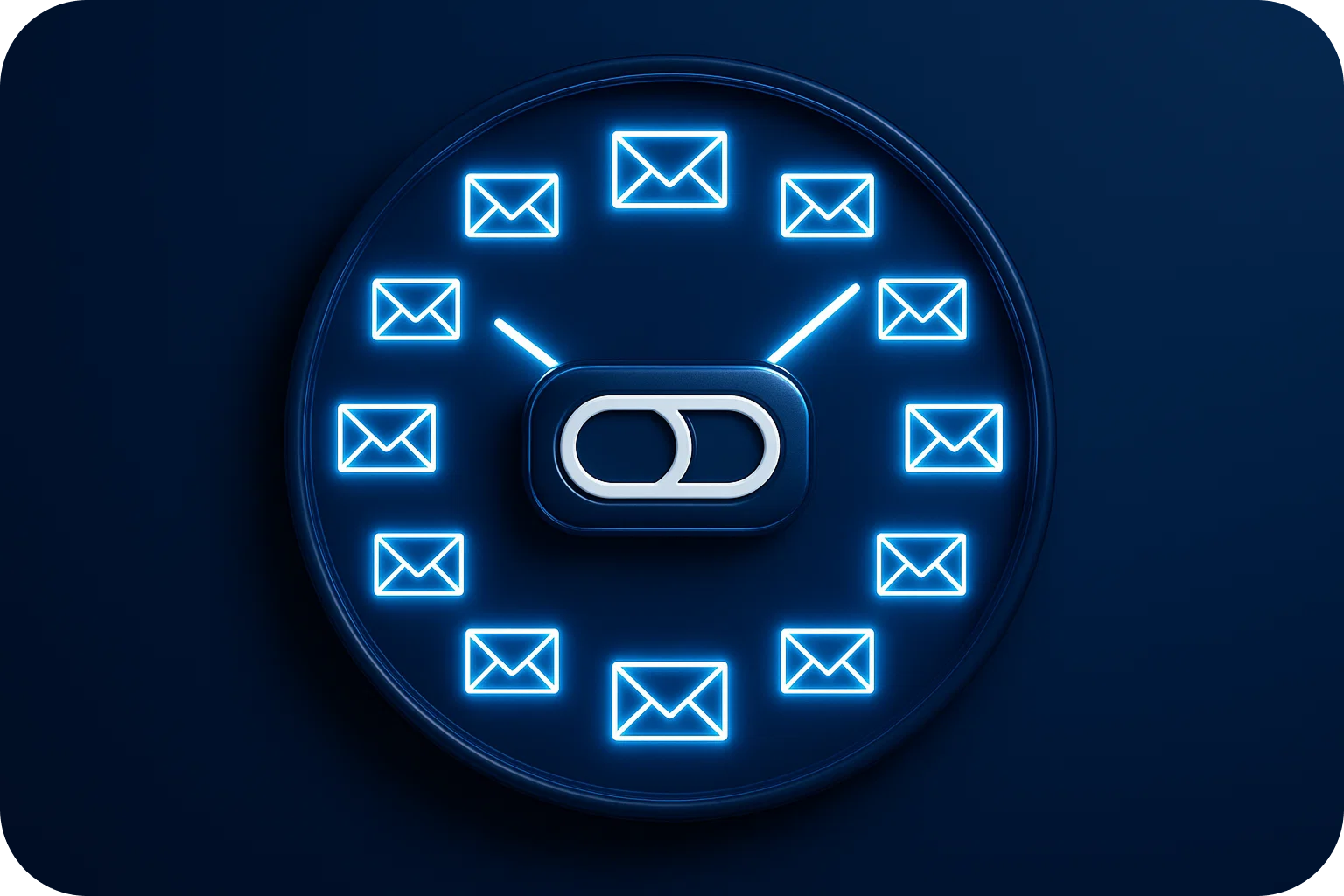The Domain Portfolio Strategy: Building Email Real Estate That Appreciates Over Time

In the world of cold email outreach, your domains are more than just technical assets, they're digital real estate that appreciates with proper care and strategic management. Just as savvy investors build property portfolios that grow in value, successful email marketers cultivate domain portfolios that strengthen deliverability, protect reputation, and become more valuable over time.
Understanding Domain Age and Email Infrastructure Value
Domain age isn't just a vanity metric. Email service providers like Gmail and Outlook use domain age as a trust signal when evaluating your messages. A domain that's been around for years, with consistent sending patterns and positive engagement, carries significantly more weight than a freshly registered domain.
Think of it this way: would you trust a business that opened yesterday as much as one that's been operating successfully for five years? Email providers apply the same logic. Older domains with clean histories signal stability and legitimacy, while new domains trigger caution flags that can land your emails in spam folders.
The appreciation curve for domains follows a predictable pattern. In the first 30 days, your domain is essentially under probation. Between 30-90 days, you're building initial trust. At 6-12 months, you've established a track record. Beyond one year, your domain enters the "mature" category, where its reputation becomes a genuine asset.
The Multi-Domain Strategy: Diversification for Email Success
Relying on a single domain for all your cold email outreach is like putting all your investment capital into one stock; it's unnecessarily risky. A multi-domain strategy provides protection, scalability, and strategic flexibility.
Why Multiple Domains Matter
Risk Mitigation: If one domain encounters deliverability issues or gets flagged, your entire outreach operation doesn't grind to a halt. Your other domains continue operating normally while you address the problem.
Volume Scaling: Email providers monitor sending volume per domain. By distributing your outreach across multiple domains, you can scale your total sending volume without triggering volume-based spam filters on any single domain.
Reputation Segmentation: Different campaigns, audiences, or testing approaches can be isolated to specific domains. Your experimental campaigns won't impact the reputation of your primary domains.
Brand Protection: Keeping your main company domain separate from cold outreach domains protects your primary brand asset from any potential deliverability fluctuations.
Optimal Portfolio Architecture
For most businesses, the ideal domain portfolio includes 3-10 domains, depending on sending volume. Here's a strategic framework:
Primary Domain (1): Your main company domain, used exclusively for transactional emails, customer communications, and warm contacts. This domain should never be used for cold outreach.
Secondary Domains (2-4): Variations of your brand name used for primary cold outreach campaigns. These are your workhorses, aged, warmed, and carefully maintained.
Testing Domains (1-2): Newer domains used for testing new copy, audiences, or approaches. These absorb the risk of experimentation.
Reserve Domains (1-3): Domains in the warming phase, being prepared to rotate into active use or replace underperforming domains.
Building Your Domain Portfolio: A Strategic Approach
Creating a valuable domain portfolio requires planning and patience. Here's how to build email real estate that appreciates:
Domain Selection and Registration
Choose domains that are clearly related to your brand but distinct from your primary domain. Common strategies include:
- Geographic variations (yourbrand-us.com, yourbrand-eu.com)
- Descriptive additions (getyourbrand.com, tryyourbrand.com)
- Abbreviated versions (ybrand.com)
- Service-specific domains (yourbrand-sales.com)
Register domains through reputable registrars and always use privacy protection. Set up proper WHOIS information that matches your business details.
The Warming Process
New domains need a gradual introduction to email sending. This warming period typically spans 4-6 weeks:
Weeks 1-2: Start with 10-20 emails per day per inbox. Focus on high-engagement contacts or internal communications.
Weeks 3-4: Increase to 30-50 emails per day. Introduce more cold contacts while maintaining engagement rates.
Weeks 5-6: Scale to 60-80 emails per day. Monitor deliverability metrics closely.
Week 7+: Reach full sending capacity of 80-100 emails per day per inbox, though best practice recommends staying at 50-60 for optimal deliverability.
Technical Configuration
Proper DNS configuration is non-negotiable for domain value. Every domain in your portfolio needs:
- SPF records: Specify which servers can send email from your domain
- DKIM signatures: Add cryptographic authentication to your messages
- DMARC policies: Define how receivers should handle authentication failures
- Custom tracking domains: Avoid shared tracking domains that can harm reputation
These technical foundations transform a simple domain registration into a legitimate email infrastructure asset.
Managing and Maintaining Your Portfolio
Domain portfolios require ongoing management to maintain and increase their value.
Monitoring and Metrics
Track key performance indicators for each domain:
- Inbox placement rates across major providers
- Bounce rates and types
- Spam complaint rates
- Engagement metrics (opens, clicks, replies)
- Blacklist status
Set up alerts for significant changes in any metric. Early detection of issues allows for quick intervention before reputation damage occurs.
Rotation and Retirement
Not all domains will perform equally. Implement a rotation strategy:
Active rotation: Regularly cycle through which domains are used for different campaigns to distribute sending patterns.
Performance-based rotation: Move underperforming domains to less critical campaigns while promoting high-performers to primary campaigns.
Retirement protocol: Domains with persistent deliverability issues should be retired gracefully, reduced sending, then parked for 6-12 months before potential reintroduction.
Portfolio Expansion
As your business grows, your domain portfolio should expand proportionally. Plan domain acquisitions 3-6 months before you'll need them, allowing adequate warming time.
The Long-Term Value Proposition
A well-managed domain portfolio becomes increasingly valuable over time. Mature domains with positive sending histories can achieve:
- 30-50% higher inbox placement rates compared to new domains
- Greater resilience to temporary deliverability fluctuations
- Faster recovery from any reputation issues
- Higher engagement rates due to better inbox placement
This accumulated trust translates directly to business results: more meetings booked, more deals closed, and more revenue generated from your outreach efforts.
Conclusion
Building a strategic domain portfolio isn't a quick fix; it's a long-term investment in your email infrastructure. Like any valuable asset, domains require upfront investment, ongoing maintenance, and strategic management.
The businesses that treat their domains as appreciating assets rather than disposable tools consistently achieve superior deliverability, greater scalability, and more predictable outreach results. Start building your domain portfolio today, and you'll be reaping the benefits for years to come.
Ready to build an email infrastructure that grows in value over time? Mailpool provides complete domain and inbox management, handling technical configuration and deliverability monitoring, so your domain portfolio appreciates while you focus on closing deals.
More articles
Get started now




%201.png)




.png)
